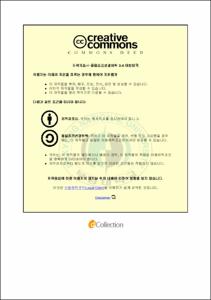유로개선에 의한 태양열 제습/냉방 시스템의 성능특성에 대한 연구
- Abstract
- The current issues in the world are energy crisis and global warming. saving energy is needed to solve energy crisis problem. In past decade, air conditioning has been widely applied in human life especially in residential, office and industrial area such food, electronics, etc. Until now, the use of air-conditioner for improvement of dwelling place is increasing. therefore, the electric power demand and supply of energy is also increasing. Solar dehumidification/air-conditioning system was proposed by many researchers to solve this problem.
This research focuses to increase the dehumidification effectiveness. This study tries to investigate common desiccant structural problem and solve it. The investigation found a common connection method. So it is suggested using Siphon tube to block the system leaks. This Siphon tube gives a liquid seal to the connection between the packed tower and desiccant container. As the result liquid seal gives better performance than the common method.
The paper is analyze the temperature different between input and output, relative humidity, humidity ratio, moisture removal rate, effectiveness and psychrometric chart. This is a helpful information to design the automatic system control for the solar dehumidification air-conditioning system.
- Issued Date
- 2014
- Awarded Date
- 2014. 2
- Type
- Dissertation
- Publisher
- 부경대학교
- Affiliation
- 대학원
- Department
- 대학원 냉동공조공학과
- Advisor
- 최광환
- Table Of Contents
- 1. 서론 1
1.1 연구 배경 및 목적 1
1.2 종래 연구 6
2. 기초이론 9
2.1 제습 정의 9
2.2 제습방법 10
2.2.1 냉각식 제습방법 11
2.2.1.1 공기 순환 계통 방식 12
2.2.1.2 냉각 순환 계통 방식 12
2.2.1.3 핫가스(HOT GAS) BY-PASS 방식 12
2.2.1.4 직접냉각 및 간접냉각 계통 방식 14
2.2.1.5 응축수 제거 방식 15
2.2.2 압축식 제습방법 15
2.2.3 흡수식 제습방법 17
2.2.3.1 고형 흡습제 17
2.2.3.2 조해성 흡습제 18
2.2.3.3 액체 흡습제 18
2.2.4 흡착식 제습방법 20
2.2.4.1 흡착 원리 21
2.2.4.2 흡착제 22
2.2.5 건조제 제습방법 26
2.2.5.1 제습 로터 26
3. 실험장치 및 방법 28
3.1 실험장치 구성 28
3.1.1 제습시스템 29
3.1.2 재생시스템 32
3.2 측정 보조기기 35
3.3 실측기구 39
3.3.1 데이터 수집 장치 39
3.3.2 센서 설치 모습 41
3.4 실험방법 45
4. 실험결과 46
4.1 실험 결과 46
4.2 결과 및 분석 50
4.2.1 물질전달 해석 50
4.2.2 습공기 선도 변화 55
5. 결론 58
참고문헌 60
- Degree
- Master
- Files in This Item:
-
-
Download
 냉방 시스템의 성능특성에 대한 연구.pdf
기타 데이터 / 5.53 MB / Adobe PDF
냉방 시스템의 성능특성에 대한 연구.pdf
기타 데이터 / 5.53 MB / Adobe PDF
-
Items in Repository are protected by copyright, with all rights reserved, unless otherwise indicated.